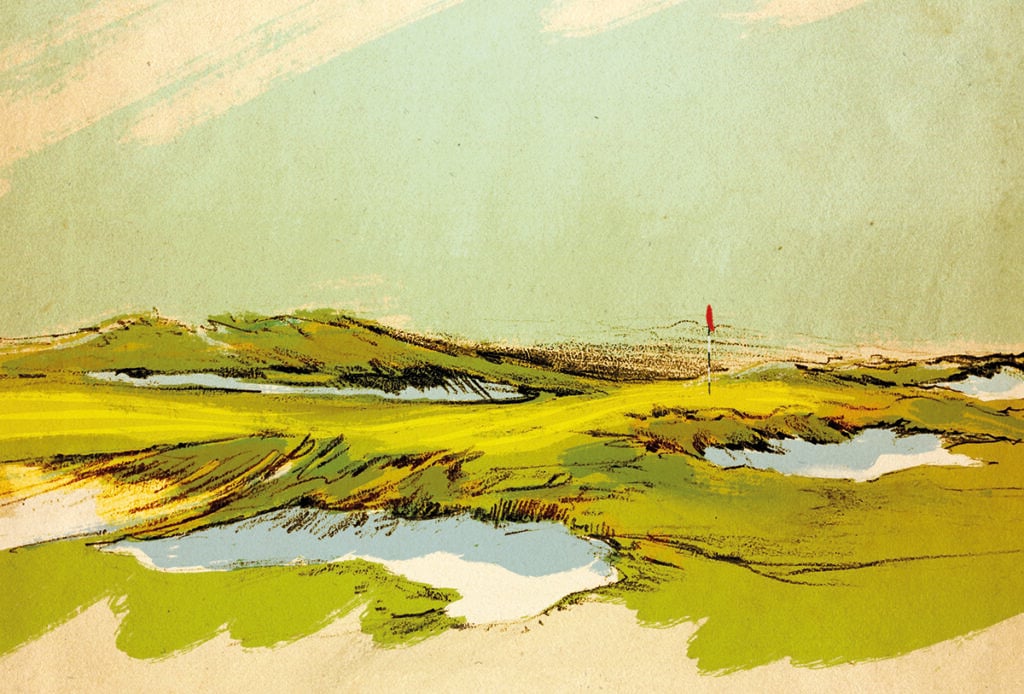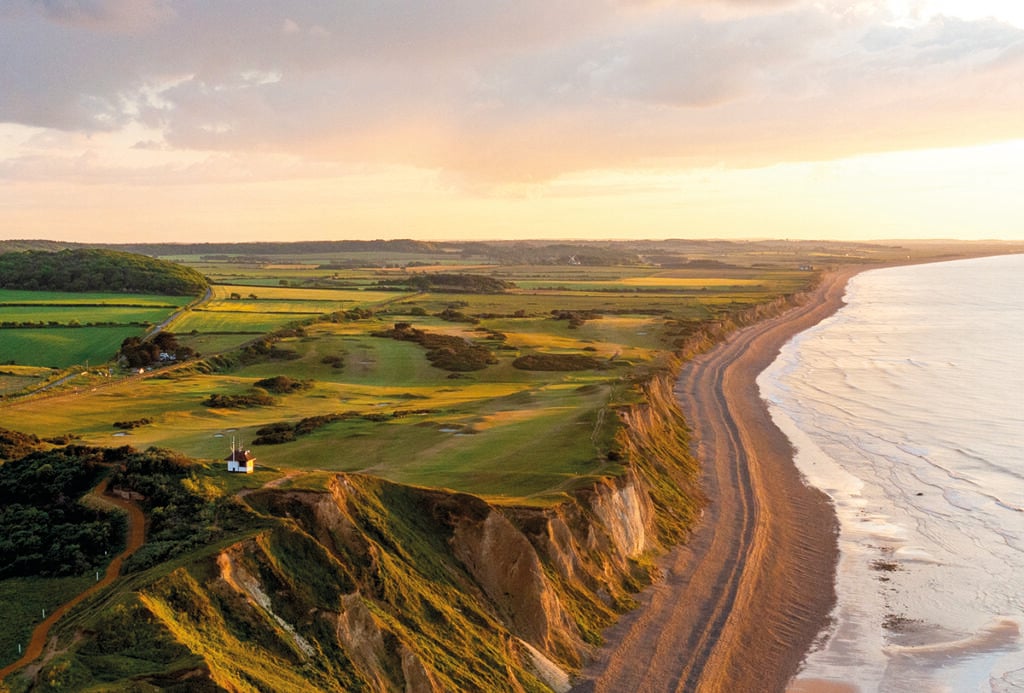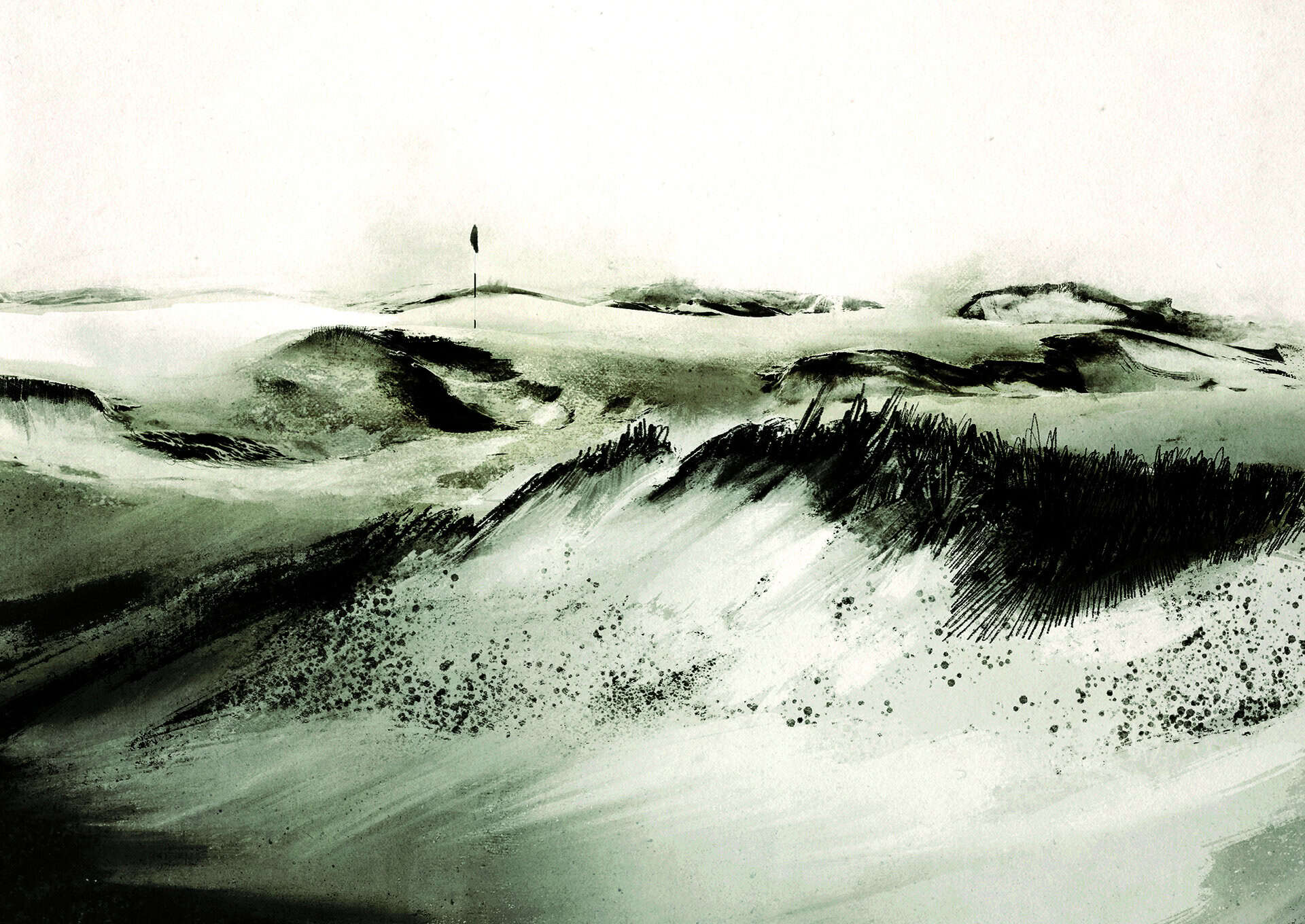I am asked three questions with startling regularity: What’s your favourite links? How did you persuade your wife? What’s the proper definition of a links course?
It’s interesting in itself that we, as golfers, care so passionately about the definition of links golf.
We don’t get hung up on the variations between a heathland or a moorland site. I think of links as the purest version of the game, almost sacrosanct. In the earliest days of golf, it was only links. Golf didn’t move inland for centuries, and even then, the best examples in Britain are on sites that have similar characteristics to links courses.

What is a links course?
The classical definition is straightforward: Sandy ground that ‘links’ the agricultural land to the sea. On the face of it, this definition would comfortably satisfy the vast majority of the links courses out there. Before the tour, having grown up playing links golf, I would have felt comfortable with this definition. However, the more courses I played, the less convinced I became that it was infallible.
Buy Links from the Road Volume 1
There were courses that met the definition that did not ‘feel’ like links courses, and vice versa. I decided I needed to dig deeper.
‘Hlincas’ is an old English word meaning ‘ridges,’ specifically, sandy ridges. It’s not hard to make the steps from hlincas to hlincs, and then to links. We’re clearly on safe ground when it comes to the etymology of the term, but again, it is too prescriptive. Many links golf courses are characterised by their sandy ridges, but plenty aren’t. We must offer some additional caveats.
Of the courses featured in Volume 1, I think it’s fair to say Hoylake, Wallasey, West Lancs, S&A, Hillside, and Birkdale all comfortably fit the classical definition. Whether they have been messed around with by the hand of man and machine or not, they are golf courses laid out on links terrain.
Advertisement
Buy Links from the Road Volume 2
The ground is sandy underneath the fine grasses that characterise the playing surface. In summer, they dry out, and the ball skips forward over the irregular shapes and contours joyfully.
They are also within close proximity to the sea. That is ‘sea’ and not just ‘water’. There are plenty of courses on the banks of a river, lake, or estuary (indeed, Hoylake is on the Dee Estuary) that are certainly not links courses. The saline nature of the spray that has historically blown or flooded over the land has helped manage the grasses that exist.
Fine fescues and marram grasses can survive (within reason) in these conditions. The broader, more fertile grasses found over parkland courses can struggle in these hostile environs.
But does it need to be sand underneath the ground to be a links? Some would argue yes, but I would say there are exceptions out there.
So, links land is sufficiently complicated to define. Free-draining, generally within a short distance of the sea, and creating a firm and irregular surface of fine grasses.
Well, if we’ve got some kind of handle on links land, what about a links course? How many holes within the links land must a course possess to be properly classed as a ‘links course’? Naturally, you’d say a true links course should be 18 holes. But what about courses that aren’t 18? Prestwick started its life as 12 holes, Musselburgh as 9. Beyond that, I would argue it can’t simply be ‘all of the holes.’
There are actually very few courses where we could all agree every single hole is on pure linksland.
Advertisement

Buy Links from the Road Volume 2
Of the courses featured in Volume 2, Silloth is one of the most authentic links landscapes you can find – in many ways the purest links of this volume,
Seascale is another that has more than enough pedigree to warrant its place – as is St Annes Old Links. Fleetwood gets my vote for the time being but will be an interesting one to watch.
For many courses on the tour, erosion and loss of land is a very real issue. Formby is one that has already suffered extensively. Royal Aberdeen and Montrose are examples that will be featured in later volumes.
What these courses would give for a concrete sea defence. Wallasey benefits from one and, as of 2018, so does Fleetwood.
The long-term benefits are clear, but they must guard against subtle changes of character than can creep in almost unnoticed. A separation from the salt spray and sand blow can slowly change the agronomy of a site.
The vegetation shifts, the fine grasses losing out to more agricultural variants. Land that once drained easily into the beach might do so less readily.
So must we update our working variation? I think there are two clear variables thar must feature. There are exceptions, but vegetation across the site must be important.
Too many trees, too much gorse even, will fix nitrogen in the ground and, if left unchecked, change the character of a landscape beyond recognition.
Buy Links from the Road Volume 1

Links facts
- 225: The number of links golf courses Sam has played in Great Britain
- 2,593: number of golf courses in Great Britain
- 14: Links golf courses to have hosted The Open
- 1860: The year the first Open was held at Prestwick
- 174: Number of bunkers at Royal Lytham & St Annes
- 5: Number of bunkers on the Postage Stamp at Royal Troon, holes measured 123 yards
- 99: Holes within the Auld Grey Toun of St Andrews – spread across the Old, New, Jubilee, Eden, Strathtyrum and Balgove courses
- ?: The total number of links courses in the world – it is hard to say with certainty
Subscribe to Links from the Road
This is an excerpt from Volume 1 and Volume 2 of Sam Cooper’s Links from the Road journals.
This 18-volume series covers every links course in Great Britain. Volume 1: The Wirral, Liverpool and Southport along with Volume 2: Fylde Coast, Lake District and Cumbria are available to purchase now from www.linksfromtheroad.com for £19.95. Subscription offers are also available.
Advertisement
What is a links course? Now have your say
Are you satisfied with what makes a links course? Are there any you’d like to see included? What’s the best links course you’ve played? Let us know by leaving a comment on X.
Advertisement
